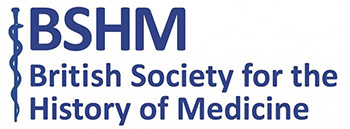The Pharmacopoeia Londinensis was originally published in Latin by the Royal College of Physicians in 1618 and translated into English by Nicholas Culpepper in the middle of the seventeenth century. To celebrate its 400th anniversary an illustrated version of the book is to be published later this year.
I am delighted to be one of a number of contemporary botanical artists asked to contribute to this exciting project. I have selected to paint the beautiful and intriguing ‘Rosa damascena’ or the damask rose. A strongly scented rose it is famous for its use in perfume with the fresh petals either distilled as rose water or as one of the worlds most expensive essential oils, 100ml costs more than £1500.00, the petals are also used dried and the hips used fresh or dried. Rosa damascena essential oil is composed of hundreds of components, including citronellol, citral, carvone, citronellyl acetate, eugenol, ethanol, farnesol, stearpoten, methyl eugenol, nerol, nonanol, nonanal, phenylacetaldehyde, phenylmethyl acetate, and phenyl geraniol. There is evidence of its use medicinally going back to the seventh century with a particular link to Iran and the Middle East. Recent studies of the pharmacological effects of the damask rose show it has not only antibacterial and anti oxidant effects, but also anti-viral, anti-depressant, anti-diabetic, analgesic and hypnotic properties.

Detail of Rosa damascena – watercolour
All of the medicinal plants painted for this publication and accompanying exhibition can be found growing in the Royal College of Physicians medicinal garden near Regents Park in London. A lecture on the Pharmacopoeia Londinensis and tours of the garden will be part of the RCP/BSHM special event on 11th June 2018. See https://www.rcplondon.ac.uk/events/medicinal-plant-lecture-historical-sidelights-and-poynter-lecture
I was particularly interested in taking part in this medicinal plant project as I have a multidisciplinary art practice with a strong research base informed by my career as a horticulturalist working in therapeutic community gardens. I use plants as a way of telling stories about our relationships with the natural world.

Ishtar
Julia Groves
info@juliagroves.co.uk
www.juliagroves.co.uk


 The advertising was so successful that soon royalty attended. All the Stuart rulers, followed by Queen Mary II and her sister Queen Anne, came for fertility problems mainly associated with the difficulties of producing a male heir. The fashionable attended as it was not too far from London, situated in pleasant countryside and it boasted good facilities for therapy and entertainment.
The advertising was so successful that soon royalty attended. All the Stuart rulers, followed by Queen Mary II and her sister Queen Anne, came for fertility problems mainly associated with the difficulties of producing a male heir. The fashionable attended as it was not too far from London, situated in pleasant countryside and it boasted good facilities for therapy and entertainment.



